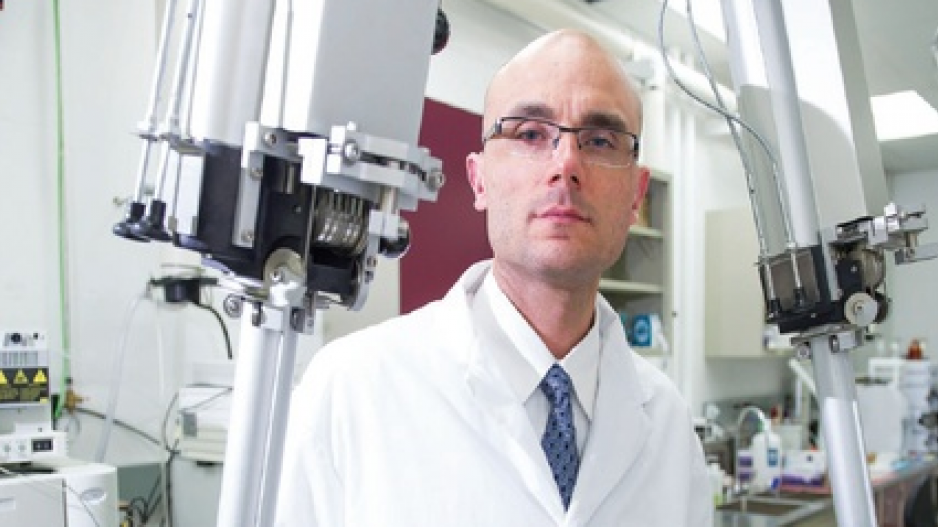When Paul Schaffer and his team were given the task four years ago of finding a cost-effective way of replacing Canada’s limited supply of medical isotopes, there was a sense they’d be cutting it close.
“We always felt our timeline [was that we] had to be done yesterday,” said Schaffer, who was hired as head of nuclear medicine at Triumf, Canada’s national laboratory for particle and nuclear physics, in 2009. “The project we’re working on now wasn’t even on the radar when I started [five years ago].”
But on January 5, Triumf announced a breakthrough.
The facility, located near the University of BC (UBC) Point Grey campus, had demonstrated the ability to produce enough medical isotopes to meet the daily demand for B.C.’s population (about 500 scans) using an SUV-sized particle accelerator known as a cyclotron, typically found in most major hospitals.
Medical isotopes are used when diagnosing cancer and cardiac conditions.
But Canada’s supply depends on a nuclear reactor in Chalk River, Ontario, which produces a large quantity of a parent isotope that decays over time to form the medical isotope.
The cost of keeping the reactor running is high, and the aging Chalk River reactor was shut down for more than a year between 2009 and 2010, halting the supply of medical isotopes.
That’s when Ottawa gave Triumf and its partners a $1.3 million grant to look at alternatives to reactors. Schaffer’s team focused on developing a method allowing hospitals already in possession of their own cyclotrons to produce medical isotopes.
“The accelerators, in principal, are completely different. They don’t use uranium, they use electricity and magnets to accelerate particles,” Schaffer said, adding he hopes the cyclotron method will be in place at hospitals by the end of 2016, when the Chalk River reactor is scheduled to stop supplying isotopes.
“We have a lower production capacity, but the technology is meant to be decentralized so you don’t have a central-point-of-failure problem.”
An April 2014 report from the Organization for Economic Co-operation and Development forecasts demand for medical isotopes will grow by between 0.5% and 5% annually from 2015 to 2020.
But taxpayers’ return on investment from Triumf isn’t limited to medical isotopes.
Home to the world’s largest cyclotron, the national lab has been able to engage in partnerships with the private sector while also developing commercial applications for the technology coming out of its facility.
Jim Hanlon, Triumf’s head of business and administration, said the government-funded lab’s commercial application branch is divided into four platforms: isotopes, accelerator science, advanced engineering and material sciences.
About 30 organizations, including NASA and Microsoft (Nasdaq:MSFT), pay Triumf regularly to use its equipment and reproduce the effects of solar radiation on electrical systems that end up in satellites or airplanes.
Cisco Systems (Nasdaq:CSCO) even paid for upgrades to one of Triumf’s facilities in exchange for access to the specialized equipment.
“That’s a good deal for them because it means they don’t have to send their teams to Finland to irradiate some of their electronics, and it’s a good deal for us because they’re coming in here and we’ve got a customer,” Hanlon said.
But the economic impact isn’t limited to major companies, he added.
Richmond-based Pavac Industries has been partnered with the facility for a decade, developing electromagnetic chambers for accelerators.
Kootenay-based D-Pace spun off from Triumf after founder Morgan Dehnel received his graduate training at the lab.
“He distributes ion sources and accelerator equipment worldwide from Nelson, B.C., based on technology from Triumf,” Hanlon said. “And he employs people in a ski town. Like, go figure.”
Hanlon stressed that the future of commercial applications for Triumf would be in the realm of isotopes, adding that the lab has received “expressions of interest” from the U.S., Asia and Europe about the cyclotron method it developed.
But Schaffer admitted there are still challenges associated with the breakthrough. He said that the first question often asked by health-care authorities is how much the cyclotron method will cost.
“We’re not able to give them 100% certainty of an answer,” he said.
An assessment from the Sauder School of Business at UBC showed the accelerator method would be slightly cheaper or slightly more expensive than reactor-based isotopes, depending on what brand of cyclotron the hospital possesses.
“The idea we’re trying to defeat is that a subsidized product [from a reactor] is going to be indefinitely available,” Schaffer said. •




